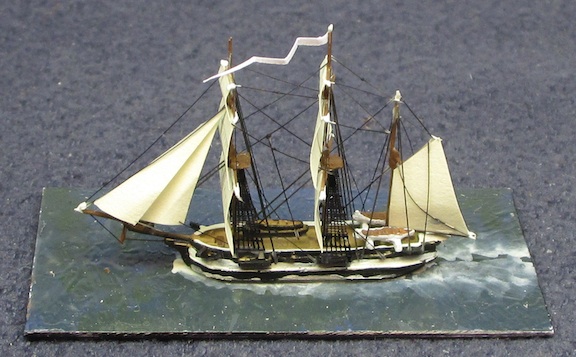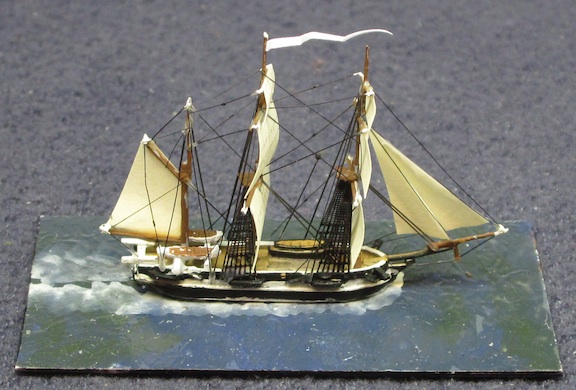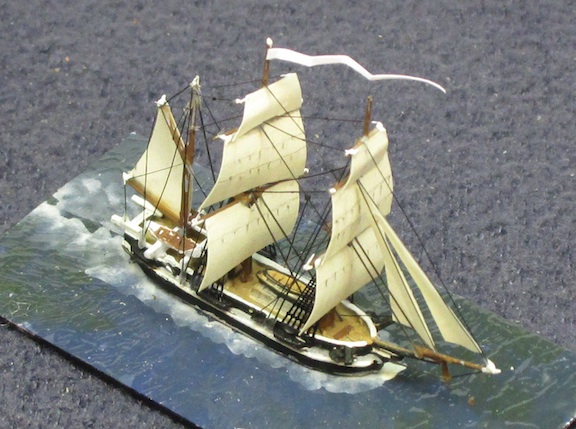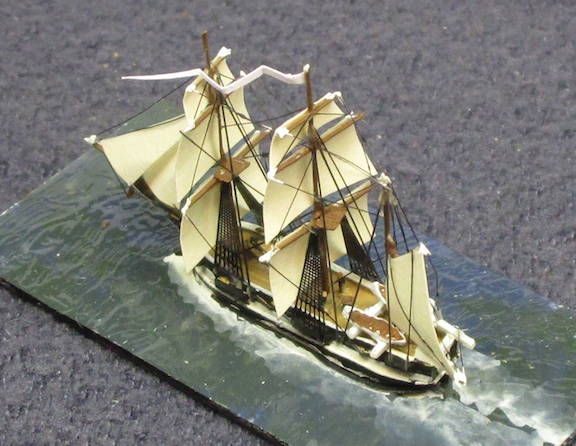H.M.S. Terror

1845
(Rodkling RKHS-200)
- Class: Vesuvius - bomb ketch of 1812
- Displacement: 325 tons burthen
- Dimensions: 102 x 27 x 12.5 ft
- Propulsion: 3 masts + 20hp steam engine
- Complement: 67
- Builder: Robert Davy, Topsham, England
- Designer: Henry Peake
- Laid down: Sep 1812
- Launched: 19 Jun 1813
- Completed: 31 Jul 1813
- Notes: Built as a bomb ketch with primary armament of 1 x 13" mortar and 1 x 10" mortar, HMS Terror served in the War of 1812, including the bombardment of Fort McHenry. Laid up afterward to 1828, she was recommissioned for duty in the Mediterranean, but then damaged near Lisbon and again withdrawn from service following repairs. The solid construction required for withstanding the recoil of the large mortars made such ships suitable for withstanding Arctic sea ice, so in 1836 she sailed to Hudson Bay under the command of George Back for exploration work. She barely survived the winter off Southampton Island, at one point being pushed forty feet up the side of a cliff by the ice. Following repairs back home, under the command of Francis Crozier she sailed with James Clark Ross' expedition to Antarctica in company with HMS Erebus (also a bomb ketch) from Sep 1839 - Sep 1843, exploring the Ross Sea south of New Zealand and the Weddell Sea southeast of the Falkland Islands.
The next year, both ships were fitted with 20hp engines and single screws for a voyage in search of the Northwest Passage under command of Sir John Franklin. The expedition sailed from Greenhithe 19 May 1845 and was last seen in Baffin Bay in Aug 1845. Search parties learned later that the ships had traveled through various channels until they became icebound in Victoria Strait between King William Island and Victoria Island. Franklin died 11 Jun 1847 and command of the expedition fell to Crozier. By the following spring 23 more men had died and on 22 Apr 1848 the 105 survivors decided to try to march overland to Fort Resolution, 600 miles to southwest. None of them made it, and the fate of the expedition was not learned until 1859, when search parties found notes and other evidence on King William Island.
On 12 Sep 2016, the Arctic Research Foundation announced that the wreck of HMS Terror had been found in Nunavut's Terror Bay, off the southwest coast of King William Island. The wreck was discovered 57 mi south of the location where the ship was reported abandoned, and some 31 mi from the wreck of HMS Erebus, discovered in 2014.



 Up
Up





 Up
Up